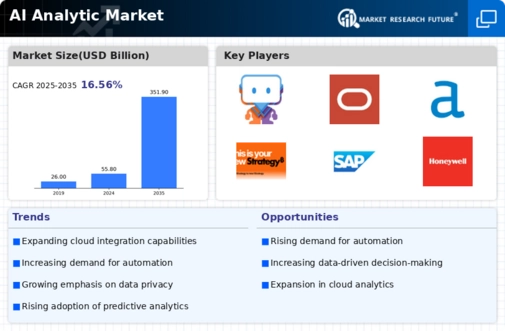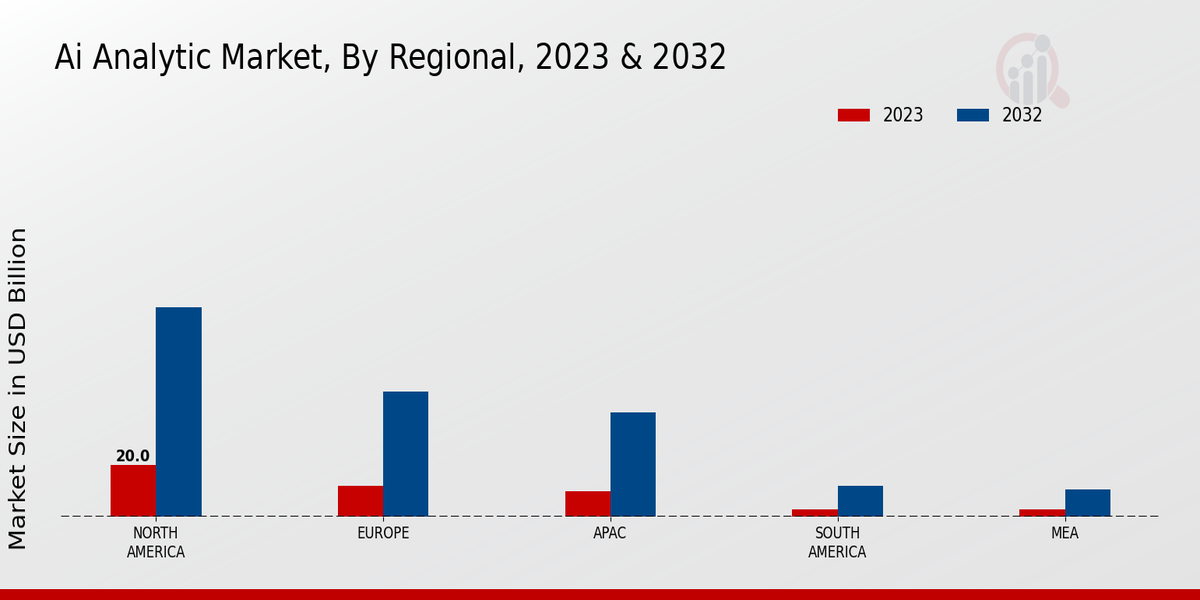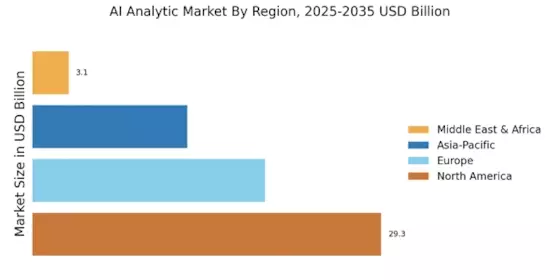Expansion of Data Sources
The AI Analytic Market is significantly influenced by the expansion of data sources. With the proliferation of digital technologies, organizations now have access to vast amounts of structured and unstructured data. This influx of data presents both opportunities and challenges for businesses aiming to harness analytics effectively. The ability to analyze diverse data types, including social media interactions, sensor data, and transactional records, enhances the depth and accuracy of insights derived from AI analytics. As a result, companies are increasingly investing in advanced AI tools that can process and analyze these varied data sources. This trend is expected to drive the AI Analytic Market, as organizations strive to extract actionable insights from the growing complexity of data landscapes.
Rising Demand for Predictive Analytics
The AI Analytic Market experiences a notable surge in demand for predictive analytics. Organizations increasingly seek to leverage data-driven insights to forecast trends and enhance decision-making processes. According to recent estimates, the predictive analytics segment is projected to grow at a compound annual growth rate of approximately 25% over the next five years. This growth is driven by the need for businesses to anticipate customer behavior, optimize operations, and mitigate risks. As companies recognize the value of predictive models, investments in AI technologies that facilitate these analytics are likely to increase, thereby propelling the AI Analytic Market forward. Furthermore, sectors such as finance, healthcare, and retail are particularly focused on integrating predictive analytics to gain a competitive edge.
Emphasis on Enhanced Customer Experience
In the AI Analytic Market, there is a pronounced emphasis on enhancing customer experience through data analytics. Businesses are increasingly utilizing AI-driven analytics to understand customer preferences, behaviors, and feedback. By leveraging these insights, organizations can tailor their products and services to meet customer needs more effectively. Recent studies indicate that companies that prioritize customer experience are likely to see a revenue increase of up to 10% annually. This focus on customer-centric strategies is prompting investments in AI analytics tools that facilitate real-time feedback analysis and personalized marketing efforts. As organizations recognize the correlation between customer satisfaction and business performance, the demand for AI analytics solutions is expected to rise, further propelling the AI Analytic Market.
Regulatory Compliance and Data Governance
The AI Analytic Market is increasingly shaped by the need for regulatory compliance and robust data governance frameworks. As data privacy regulations become more stringent, organizations are compelled to adopt AI analytics solutions that ensure compliance with legal standards. This trend is particularly evident in sectors such as finance and healthcare, where data handling practices are under intense scrutiny. Companies are investing in AI tools that not only provide analytical capabilities but also incorporate features for data governance and compliance monitoring. This dual focus on analytics and regulatory adherence is likely to drive growth in the AI Analytic Market, as organizations seek to mitigate risks associated with non-compliance while leveraging data for strategic advantage.
Advancements in Machine Learning Algorithms
The AI Analytic Market is witnessing rapid advancements in machine learning algorithms, which are pivotal for enhancing analytical capabilities. Innovations in algorithm design are enabling more accurate predictions and deeper insights from data. As machine learning techniques evolve, organizations are increasingly adopting these advanced algorithms to improve their analytical processes. The integration of deep learning and neural networks is particularly noteworthy, as these technologies allow for the analysis of complex data patterns that traditional methods may overlook. This trend is expected to drive the AI Analytic Market, as businesses recognize the potential of sophisticated algorithms to unlock new levels of insight and operational efficiency.



















Leave a Comment